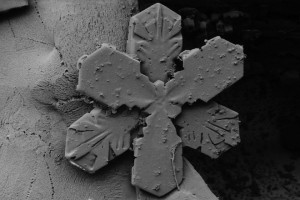I’ve spent this morning watching off and on snow tumble down from the sky. Even our kiddos looked up from their Legos they got for Christmas to say, “Wow, it’s snowing!” Anything that gets them away from Legos is impressive. And the size and shape of those flakes is constantly changing. Have you ever noticed how they do that?
Even more spectacular than watching the snow fly is the way they look under an electron microscope. You’re talking serious power to analyze each and every flake. Check out this incredible gallery and story on how and why researchers even do that sort of thing.
Three Things To Know About Snowflake Shapes
- Snowflakes are more than frozen water. They are made up of a cluster of six sided snow crystals.
- In very cold conditions snowflakes tend to be smaller (made of fewer crystals) because they don’t hold together well as they fall from the sky.
- If there’s relatively warm air above you, the crystals will partially melt and easily stick together. Sometimes forming huge ‘quarter’ or ‘silver dollar’ sized flakes.
I’ll never forget the day I saw huge snowflakes falling from the sky while I was in Beaverton. And as far as today’s snow. Well, it’s a familiar northwest weather story. Colder air moving in as moisture winds down. Fingers are crossed for a January snow storm. That’s when the odds are greatest. We’ll see!

Wow–a weather science site! This is going on my menu bar! Love the snowflake photos, especially the 3-D ones. I really appreciate your weather analysis on KOIN, it’s my favorite part of the news.